US Airways 2008 Annual Report Download - page 73
Download and view the complete annual report
Please find page 73 of the 2008 US Airways annual report below. You can navigate through the pages in the report by either clicking on the pages listed below, or by using the keyword search tool below to find specific information within the annual report.-
 1
1 -
 2
2 -
 3
3 -
 4
4 -
 5
5 -
 6
6 -
 7
7 -
 8
8 -
 9
9 -
 10
10 -
 11
11 -
 12
12 -
 13
13 -
 14
14 -
 15
15 -
 16
16 -
 17
17 -
 18
18 -
 19
19 -
 20
20 -
 21
21 -
 22
22 -
 23
23 -
 24
24 -
 25
25 -
 26
26 -
 27
27 -
 28
28 -
 29
29 -
 30
30 -
 31
31 -
 32
32 -
 33
33 -
 34
34 -
 35
35 -
 36
36 -
 37
37 -
 38
38 -
 39
39 -
 40
40 -
 41
41 -
 42
42 -
 43
43 -
 44
44 -
 45
45 -
 46
46 -
 47
47 -
 48
48 -
 49
49 -
 50
50 -
 51
51 -
 52
52 -
 53
53 -
 54
54 -
 55
55 -
 56
56 -
 57
57 -
 58
58 -
 59
59 -
 60
60 -
 61
61 -
 62
62 -
 63
63 -
 64
64 -
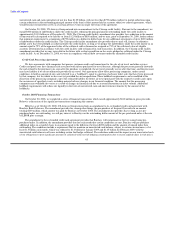 65
65 -
 66
66 -
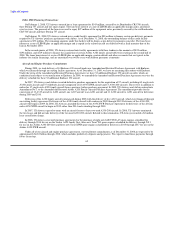 67
67 -
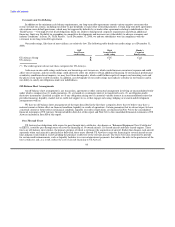 68
68 -
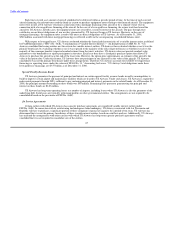 69
69 -
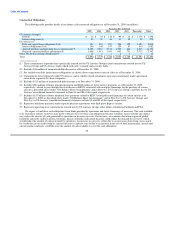 70
70 -
 71
71 -
 72
72 -
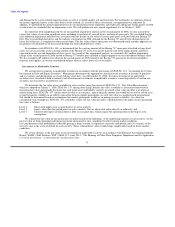 73
73 -
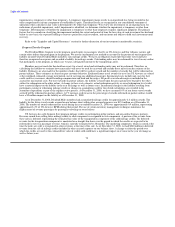 74
74 -
 75
75 -
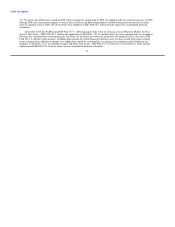 76
76 -
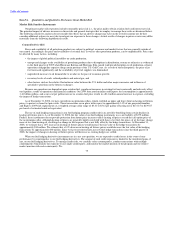 77
77 -
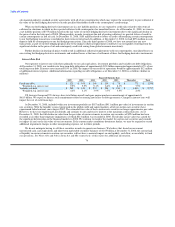 78
78 -
 79
79 -
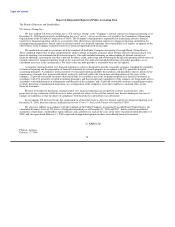 80
80 -
 81
81 -
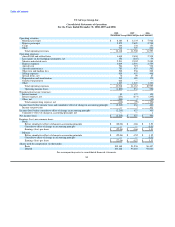 82
82 -
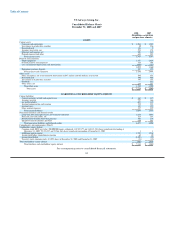 83
83 -
 84
84 -
 85
85 -
 86
86 -
 87
87 -
 88
88 -
 89
89 -
 90
90 -
 91
91 -
 92
92 -
 93
93 -
 94
94 -
 95
95 -
 96
96 -
 97
97 -
 98
98 -
 99
99 -
 100
100 -
 101
101 -
 102
102 -
 103
103 -
 104
104 -
 105
105 -
 106
106 -
 107
107 -
 108
108 -
 109
109 -
 110
110 -
 111
111 -
 112
112 -
 113
113 -
 114
114 -
 115
115 -
 116
116 -
 117
117 -
 118
118 -
 119
119 -
 120
120 -
 121
121 -
 122
122 -
 123
123 -
 124
124 -
 125
125 -
 126
126 -
 127
127 -
 128
128 -
 129
129 -
 130
130 -
 131
131 -
 132
132 -
 133
133 -
 134
134 -
 135
135 -
 136
136 -
 137
137 -
 138
138 -
 139
139 -
 140
140 -
 141
141 -
 142
142 -
 143
143 -
 144
144 -
 145
145 -
 146
146 -
 147
147 -
 148
148 -
 149
149 -
 150
150 -
 151
151 -
 152
152 -
 153
153 -
 154
154 -
 155
155 -
 156
156 -
 157
157 -
 158
158 -
 159
159 -
 160
160 -
 161
161 -
 162
162 -
 163
163 -
 164
164 -
 165
165 -
 166
166 -
 167
167 -
 168
168 -
 169
169 -
 170
170 -
 171
171 -
 172
172 -
 173
173 -
 174
174 -
 175
175 -
 176
176 -
 177
177 -
 178
178 -
 179
179 -
 180
180 -
 181
181 -
 182
182 -
 183
183 -
 184
184 -
 185
185 -
 186
186 -
 187
187 -
 188
188 -
 189
189 -
 190
190 -
 191
191 -
 192
192 -
 193
193 -
 194
194 -
 195
195 -
 196
196 -
 197
197 -
 198
198 -
 199
199 -
 200
200 -
 201
201 -
 202
202 -
 203
203 -
 204
204 -
 205
205 -
 206
206 -
 207
207 -
 208
208 -
 209
209 -
 210
210 -
 211
211 -
 212
212 -
 213
213 -
 214
214 -
 215
215 -
 216
216 -
 217
217 -
 218
218 -
 219
219 -
 220
220 -
 221
221 -
 222
222 -
 223
223 -
 224
224 -
 225
225 -
 226
226 -
 227
227 -
 228
228 -
 229
229 -
 230
230 -
 231
231 -
 232
232 -
 233
233 -
 234
234 -
 235
235 -
 236
236 -
 237
237 -
 238
238 -
 239
239 -
 240
240 -
 241
241 -
 242
242 -
 243
243 -
 244
244 -
 245
245 -
 246
246 -
 247
247 -
 248
248 -
 249
249 -
 250
250 -
 251
251 -
 252
252 -
 253
253 -
 254
254 -
 255
255 -
 256
256 -
 257
257 -
 258
258 -
 259
259 -
 260
260 -
 261
261 -
 262
262 -
 263
263 -
 264
264 -
 265
265 -
 266
266 -
 267
267 -
 268
268 -
 269
269 -
 270
270 -
 271
271 -
 272
272 -
 273
273 -
 274
274 -
 275
275 -
 276
276 -
 277
277 -
 278
278 -
 279
279 -
 280
280 -
 281
281 -
 282
282 -
 283
283 -
 284
284 -
 285
285 -
 286
286 -
 287
287 -
 288
288 -
 289
289 -
 290
290 -
 291
291 -
 292
292 -
 293
293 -
 294
294 -
 295
295 -
 296
296 -
 297
297 -
 298
298 -
 299
299 -
 300
300 -
 301
301 -
 302
302 -
 303
303 -
 304
304 -
 305
305 -
 306
306 -
 307
307 -
 308
308 -
 309
309 -
 310
310 -
 311
311 -
 312
312 -
 313
313 -
 314
314 -
 315
315 -
 316
316 -
 317
317 -
 318
318 -
 319
319 -
 320
320 -
 321
321 -
 322
322 -
 323
323 -
 324
324 -
 325
325 -
 326
326 -
 327
327 -
 328
328 -
 329
329 -
 330
330 -
 331
331 -
 332
332 -
 333
333 -
 334
334 -
 335
335 -
 336
336 -
 337
337 -
 338
338 -
 339
339 -
 340
340 -
 341
341 -
 342
342 -
 343
343 -
 344
344 -
 345
345 -
 346
346 -
 347
347 -
 348
348 -
 349
349 -
 350
350 -
 351
351 -
 352
352 -
 353
353 -
 354
354 -
 355
355 -
 356
356 -
 357
357 -
 358
358 -
 359
359 -
 360
360 -
 361
361 -
 362
362 -
 363
363 -
 364
364 -
 365
365 -
 366
366 -
 367
367 -
 368
368 -
 369
369 -
 370
370 -
 371
371 -
 372
372 -
 373
373 -
 374
374 -
 375
375 -
 376
376 -
 377
377 -
 378
378 -
 379
379 -
 380
380 -
 381
381 -
 382
382 -
 383
383 -
 384
384 -
 385
385 -
 386
386 -
 387
387 -
 388
388 -
 389
389 -
 390
390 -
 391
391 -
 392
392 -
 393
393 -
 394
394 -
 395
395 -
 396
396 -
 397
397 -
 398
398 -
 399
399 -
 400
400 -
 401
401
 |
 |

Table of Contents
and demand factors at the related airport locations as well as available market sale and lease data. For trademarks, we utilized a form of
the income approach known as the relief-from-royalty method. As a result of these assessments, no impairment was indicated. In
addition, we performed the annual impairment test on our international route authorities and trademarks during the fourth quarter of 2008,
at which time we concluded that no impairment exists. We will perform our next annual impairment test on October 1, 2009.
In connection with completing step two of our goodwill impairment analysis in the second quarter of 2008, we also assessed the
current fair values of our other significant assets including owned aircraft, aircraft leases, and aircraft spare parts. We concluded that the
only additional impairment indicated was associated with the decline in fair value of certain spare parts associated with our Boeing 737
fleet. Due to record high fuel prices and the industry environment in 2008, demand for the Boeing 737 aircraft type declined given its
lower fuel efficiency as compared to other aircraft types. The fair value of these spare parts was determined using a market approach on
the premise of continued use of the aircraft through our final scheduled lease return.
In accordance with SFAS No. 144, we determined that the carrying amount of the Boeing 737 spare parts classified as long-lived
assets was not recoverable as the carrying amount of the Boeing 737 assets was greater than the sum of the undiscounted cash flows
expected from the use and disposition of these assets. As a result of this impairment analysis, we recorded a $13 million impairment
charge in the second quarter of 2008 related to Boeing 737 rotable parts included in flight equipment on our consolidated balance sheet.
We also recorded a $5 million write down in the second quarter of 2008 related to our Boeing 737 spare parts inventory included in
materials and supplies, net on our consolidated balance sheet to reflect lower of cost or market.
Investments in Marketable Securities
We account for investments in marketable securities in accordance with the provisions of SFAS No. 115, "Accounting for Certain
Investments in Debt and Equity Securities." Management determines the appropriate classification of securities at the time of purchase
and re-evaluates such designation as of each balance sheet date. As of December 31, 2008, all current investments in marketable
securities were classified as held to maturity and all noncurrent investments in marketable securities, consisting entirely of auction rate
securities, are classified as available for sale.
We determine the fair value of our available for sale securities using the criteria of SFAS No. 157, "Fair Value Measurements,"
which we adopted on January 1, 2008. SFAS No. 157, among other things, defines fair value, establishes a consistent framework for
measuring fair value and expands disclosure for each major asset and liability category measured at fair value on either a recurring or
nonrecurring basis. SFAS No. 157 clarifies that fair value is an exit price, representing the amount that would be received to sell an asset
or paid to transfer a liability in an orderly transaction between market participants. As such, fair value is a market-based measurement
that should be determined based on assumptions that market participants would use in pricing an asset or liability. As a basis for
considering such assumptions, SFAS No. 157 establishes a three-tier fair value hierarchy, which prioritizes the inputs used in measuring
fair value as follows:
Level 1. Observable inputs such as quoted prices in active markets;
Level 2. Inputs, other than the quoted prices in active markets, that are observable either directly or indirectly; and
Level 3. Unobservable inputs in which there is little or no market data, which require the reporting entity to develop its own
assumptions.
We estimate the fair value of our auction rate securities based on the following: (i) the underlying structure of each security; (ii) the
present value of future principal and interest payments discounted at rates considered to reflect current market conditions;
(iii) consideration of the probabilities of default, passing a future auction, or repurchase at par for each period; and (iv) estimates of the
recovery rates in the event of default for each security. These estimated fair values could change significantly based on future market
conditions.
We review declines in the fair value of our investments in marketable securities in accordance with Financial Accounting Standards
Board ("FASB") Staff Position ("FSP") SFAS 115-1 and 124-1, "The Meaning of Other-Than-Temporary Impairment and Its Application
to Certain Investments," to determine the classification of the
71
